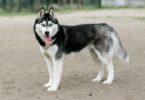Imagine coming home to a fluffy bundle of joy whose tail wags like a metronome set to pure happiness. For many pet lovers, this dream becomes reality with a small, affectionate companion that fits seamlessly into busy lives. Among designer breeds, one hybrid stands out for its charm and adaptability—a perfect blend of ancient lineage and modern appeal.
This guide explores everything you need to know about this popular crossbreed. Known for its low-shedding coat and gentle temperament, it’s ideal for families or apartment dwellers. You’ll discover how its playful spirit and loyalty make it more than just a pet—it’s a devoted friend.
We’ll cover essential topics like grooming routines tailored to its silky fur, training strategies for intelligent small dogs, and health tips to ensure a long, vibrant life. Whether you’re a first-time owner or adding to your furry family, our expert-backed advice simplifies complex care practices.
By blending the best traits of its parent breeds, this hybrid thrives in diverse households. Its hypoallergenic qualities and compact size mean even allergy-prone owners can enjoy companionship without compromise. Ready to unlock the secrets to raising a happy, healthy four-legged confidant? Let’s begin.
Understanding the Maltese Shih Tzu Mix Breed
When two beloved breeds unite, their offspring bring together traits that cater to contemporary lifestyles. This crossbreed inherits a silky, low-shedding coat from its Maltese lineage and a sturdy, playful demeanor from the Shih Tzu side. These qualities make it a top choice for urban dwellers and families alike.
Overview of Designer Dog Traits
Combining the best of both parent breeds, this hybrid thrives in diverse settings. Its hypoallergenic coat sheds minimally, reducing allergens for sensitive owners. Compact size and adaptability let it flourish in apartments or homes with yards.
Unique Companion Qualities
Known for their friendly nature, these dogs form strong bonds with families. Early socialization and reward-based training enhance their natural eagerness to please. Their cheerful personality and loyalty make them ideal for first-time owners or households with children.
Versatility defines this crossbreed—whether snuggling on couches or joining outdoor adventures. Gentle yet playful, they adapt quickly to routines while keeping households lively. It’s no wonder they’ve become cherished companions across the U.S.
Breed History and Origins
The story of this beloved hybrid begins centuries ago, woven into the tapestries of two distinct cultures. By merging ancient lineages, the crossbreed carries a legacy shaped by royalty and companionship. Its parents—one from Mediterranean shores, the other from Tibetan monasteries—create a fascinating genetic tapestry.
Maltese Legacy and European Heritage
One parent breed traces its roots to Malta over 2,000 years ago. Prized by European aristocrats, these small dogs symbolized luxury. Their silky coats and gentle nature made them favored lapdogs among nobility.
Artifacts from ancient Greece and Rome depict similar dogs, confirming their enduring appeal. This lineage contributes to the hybrid’s affectionate temperament and hypoallergenic fur.
Shih Tzu Royal and Ancient Roots
The other parent breed served Chinese emperors during the Ming Dynasty. Bred in Tibetan temples, they were considered sacred companions. Their name translates to “lion dog,” reflecting their regal appearance.
Imperial records show these dogs were gifted exclusively to royalty. This heritage explains the crossbreed’s confident yet loving personality. Modern blending of these breeds began in the 1990s, combining their best traits for today’s households.
Understanding this rich history helps owners appreciate their pet’s unique quirks. From palace halls to cozy apartments, these dogs continue a tradition of loyalty spanning millennia.
Physical Characteristics and Appearance
A well-groomed coat and proportionate build define this breed’s signature look. These dogs combine elegance with practicality, making them both eye-catching and easy to manage in various living spaces.
Coat Colors, Texture, and Maintenance
Their soft, dense fur appears in white, black, brown, or blended shades like cream and gray. Wavy or straight textures require brushing 4-5 times weekly to prevent tangles. Though low-shedding, regular grooming maintains the coat’s hypoallergenic benefits.
Use a slicker brush for detangling and a comb for finer areas. Trimming around the eyes and paws improves comfort. Professional grooming every 6-8 weeks keeps their luxurious appearance intact.
Size, Weight, and Balanced Build
Most adults weigh 7-15 pounds and stand 8-11 inches tall. Their compact body features a rounded head, expressive dark eyes, and a tail that curls over the back.
The sturdy frame supports playful energy without compromising portability. Balanced proportions make them adaptable for travel or lounging. Proper nutrition and exercise help maintain their ideal weight throughout life.
Personality, Temperament, and Family Compatibility
A dog’s temperament often determines its fit within a household. This breed shines as a devoted family member, blending playfulness with unwavering loyalty. Its cheerful nature thrives in active homes but adapts equally well to quieter environments.
Friendly and Affectionate Demeanor
These companions greet everyone with enthusiasm, from toddlers to seniors. Their gentle approach makes them ideal for households with young children. Early socialization helps refine their natural friendliness, ensuring polite interactions with strangers and pets.
Positive reinforcement training strengthens their desire to please. Short, engaging sessions work best to maintain focus. While intelligent, occasional stubbornness may surface—patience and consistency yield the best results.
Separation anxiety can develop if left alone frequently. Regular interaction and puzzle toys help ease stress. Families who work from home or have flexible schedules often find this breed particularly well-suited to their lifestyle.
Their adaptability extends to multi-pet households. Proper introductions ensure harmony with other animals. For those considering similar breeds, learn more about small breed temperaments to compare compatibility factors.
Caring for Your Maltese Shih Tzu Mix
A consistent routine keeps your companion thriving in any home. Balancing daily care with long-term health strategies ensures they stay vibrant at every life stage. Let’s explore practical ways to maintain their well-being through grooming and nutrition.
Grooming and Coat Maintenance Tips
Brushing their silky fur 4-5 times weekly prevents mats and distributes natural oils. Use a slicker brush for the body and a fine-tooth comb around sensitive areas like ears and paws. Monthly baths with hypoallergenic shampoo keep their coat clean without irritating skin.
Trim nails every 3-4 weeks to avoid overgrowth. Check ears weekly for redness or odor, cleaning gently with vet-approved solution. Wipe tear stains daily using a soft cloth to prevent discoloration below the eyes.
Health Monitoring and Diet Considerations
Schedule vet checkups every 6 months to catch potential health issues early. Watch for signs of patellar luxation like skipping steps or sudden lameness during walks. Dental chews and weekly teeth brushing combat tartar buildup.
Choose high-quality dog food with real meat as the first ingredient. Puppies need three small meals daily, while adults thrive on two portion-controlled servings. Senior dogs benefit from joint-supporting nutrients like glucosamine. Always provide fresh water and avoid table scraps to maintain digestive health.
Training and Socialization Tips
Building a strong foundation through consistent training shapes well-mannered companions. Early lessons help these intelligent dogs channel their playful energy into desirable behaviors while strengthening your bond. Socialization exposes them to diverse environments, sounds, and people, preventing fear-based reactions later in life.
Effective Positive Reinforcement Techniques
Reward-based methods work best for this people-focused breed. Offer small treats or enthusiastic praise immediately after they follow commands like “sit” or “stay.” Keep sessions under 10 minutes to maintain engagement—think of it as a game rather than a chore.
Stubborn moments often arise during repetitive tasks. Break complex skills into smaller steps, celebrating each success. For example, teach “come” indoors first before practicing in busier outdoor spaces. Pair verbal cues with hand signals to enhance understanding.
Introduce new experiences gradually between ages 8-16 weeks. Arrange controlled playdates with vaccinated dogs and invite friends over to build confidence around strangers. Consistency matters—practice commands daily during feeding times or walks.
Structured routines reduce anxiety by creating predictability. Use puzzle toys filled with kibble to reinforce problem-solving skills when alone. For detailed expert puppy training advice, explore proven strategies tailored to small breeds.
Patience transforms challenges into achievements. Avoid scolding—redirect unwanted behaviors with calm corrections. Over time, this approach nurtures trust and encourages eagerness to learn, paving the way for a harmonious relationship.
Exercise and Daily Activity Needs
Maintaining an active lifestyle benefits both pets and their owners. These small companions thrive with 30-45 minutes of daily exercise split between walks and playtime. Short walks around the block or indoor fetch games work well for compact living spaces.
Regular movement prevents weight gain and reduces anxiety. Interactive toys like treat puzzles engage their sharp minds during downtime. Rotate activities weekly to keep them curious—hide-and-seek or gentle tug-of-war sessions work wonders.
Busy schedules? Owners can split activity into 10-minute sessions throughout the day. Morning fetch, lunchtime sniff walks, and evening training drills maintain consistency without overwhelm. Mental stimulation counts too—teach new tricks during commercial breaks.
Balance energetic play with quiet rest periods. Overexertion risks joint strain in smaller breeds. Watch for tiredness signs like lagging during walks. A mix of movement and downtime creates happy, well-adjusted pets ready for cuddles after burning energy.
Feeding and Nutritional Guidelines
Proper nutrition fuels every wag and zoomie, shaping a dog’s vitality from nose to tail. Tailoring meals to life stages ensures your companion thrives through playful puppy days and golden senior years. Let’s explore how to balance nutrients while keeping meals enjoyable.
Life Stage Meal Planning
Puppies need protein-rich food to support rapid growth—aim for 22-25% protein content. Feed three small meals daily to stabilize energy levels. Look for calcium and DHA in puppy formulas to strengthen bones and brain development.
Adults benefit from two measured portions of high-quality dog food. Choose options with 18-20% protein and healthy fats like omega-3s. Avoid fillers such as corn or soy, which offer little nutritional value. Adjust portions based on activity—couch potatoes need fewer calories than adventure buddies.
Seniors often require fewer calories but more fiber and joint-supporting nutrients. Switch to senior-specific diets around age 8-10. Glucosamine supplements can ease stiff joints, while probiotics aid digestion. Consult your vet to address age-related changes like slower metabolism.
Monitor weight monthly using a scale or visual checks. Ribs should be palpable but not visible. Treats shouldn’t exceed 10% of daily calories—try carrot sticks or blueberries for low-calorie rewards. Always provide fresh water and store food in airtight containers to preserve freshness.
Common Health Concerns and Conditions
Every pet owner’s priority is ensuring their furry friend stays healthy and happy. While generally robust, this breed may face specific health issues requiring attention. Early recognition and preventive care significantly improve quality of life.
Identifying Patellar Luxation and Other Issues
Patellar luxation ranks among common conditions, where the kneecap slips out of place. Watch for limping, sudden leg lifts, or reluctance to jump. Dental disease also develops easily due to crowded teeth—regular brushing prevents painful tartar buildup.
Eye problems like corneal ulcers may occur. Squinting or excessive tearing warrants vet attention. Routine checks between the toes help spot skin irritations early. Maintain a journal to track unusual behaviors or physical changes.
Importance of Regular Veterinary Checkups
Bi-annual exams allow professionals to detect hidden conditions. Vets assess joint mobility, dental health, and heart function during visits. Blood tests screen for metabolic disorders common in small breeds.
Preventive measures include tailored vaccination schedules and parasite control. For specialized expert health guidance, consult resources that address breed-specific needs. Combine vet insights with daily observations for comprehensive care.
A balanced diet and moderate exercise strengthen overall health. Address minor issues promptly before they escalate. Proactive owners often enjoy more active years with their companions.
Managing Separation Anxiety and Behavioral Issues
Companionship-driven dogs often struggle when left alone for extended periods. Their strong bond with owners can lead to distress if not managed properly. Recognizing early signs like pacing or whining helps address issues before they escalate.
Building Confidence Through Gradual Training
Start by leaving your pet alone for 5-10 minutes daily, increasing duration weekly. Create positive associations by offering treats or favorite toys before departures. Avoid emotional farewells—calm exits reduce anxiety triggers.
Interactive puzzles stuffed with kibble keep minds engaged during absences. Rotate toys to maintain novelty and prevent boredom. White noise machines or calming music can mask outside sounds that trigger barking.
Establish consistent feeding and walking schedules to create predictability. Reward quiet behavior immediately upon returning home. For persistent cases, consult a professional trainer or explore resources on recognizing anxiety symptoms in small breeds.
Secure spaces like crates or gated areas provide comfort when unsupervised. Leave unwashed clothing with your scent to reassure nervous pets. Early intervention paired with patience fosters resilience over time, transforming stress into calm independence.
Living Arrangements and Adaptability
Finding the ideal home environment for a pet involves matching their needs with your lifestyle. This breed excels in both compact apartments and spacious houses due to its adaptable nature. Their moderate energy levels and preference for indoor companionship make them versatile housemates.
Urban Spaces vs Suburban Homes
In apartments, their small size proves advantageous. Daily walks and indoor play sessions satisfy exercise requirements without needing large yards. Noise sensitivity varies, so position beds away from busy hallways or street-facing windows.
Households with yards benefit from supervised outdoor exploration. Secure fencing prevents escapes since curious noses might follow intriguing scents. Regardless of space, create designated rest areas with cozy beds to help them feel grounded.
Environmental adjustments enhance comfort in any setting. Use baby gates to block staircases or unsafe zones. Rotate chew toys and puzzle feeders to prevent boredom. Consistent care routines—like scheduled potty breaks—help them adapt quickly to new surroundings.
Owners in cities and suburbs alike report success by prioritizing mental stimulation over square footage. Whether in high-rises or ranch-style homes, this breed thrives when included in daily family activities. Assess your living situation honestly to ensure you can meet their social and physical needs year-round.
Final Thoughts on the Maltese Shih Tzu Mix
Bringing home a new furry family member blends excitement with responsibility. This crossbreed’s unique charm comes from its rich lineage—combining the gentle nature of Mediterranean ancestors with the regal confidence of ancient temple companions. Owners who prioritize consistent grooming, portion-controlled meals, and daily play sessions set their pets up for thriving lives.
Understanding this hybrid’s needs transforms care into bonding opportunities. Short training drills reinforce good behavior, while routine vet visits catch potential health conditions early. Their adaptable personality shines when matched with engaged owners ready to provide structure and affection.
By embracing both parent breeds’ strengths, you create an environment where loyalty and playfulness flourish. Whether mastering commands or curling up for naps, these companions reward dedicated care with endless devotion. Let this guide empower your journey toward joyful, informed pet parenting.
FAQ
What makes this crossbreed a good companion pet?
Their affectionate nature and small size make them ideal for families or individuals seeking a loyal, low-shedding companion. They thrive on human interaction and adapt well to various lifestyles.
How often should their coat be groomed?
Daily brushing prevents tangles in their silky fur, with professional grooming recommended every 6–8 weeks. Regular trims around the eyes reduce tear staining and irritation.
Are these dogs prone to specific health conditions?
Common issues include patellar luxation, eye problems, and dental concerns. Annual vet visits and a balanced diet help manage risks and ensure early detection of potential conditions.
Can they handle being left alone during work hours?
Prolonged isolation may trigger separation anxiety. Interactive toys and gradual training help reduce stress, but they prefer homes where someone is present most of the day.










Leave a Comment